This site is part of various affiliate programs. Links may give us a small compensation for any purchases you make, at no additional cost to you. Please read the disclaimer policy for full details.
Following the popularity of high-end point-and-shoot cameras with fixed prime lenses, many manufacturers started producing the same cameras with zoom lenses. Kyocera wasn’t going to allow the success of the Contax lineup to dwindle away, so they released the Contax Tvs, the forerunner to the Contax TVSii.
It is essentially a slightly upgraded Contax T2 with a Vario-Sonnar lens, which means that instead of a 38mm prime lens, you are getting a 28-56mm zoom lens.
Being an incrementally upgraded Contax T2, the Tvs retain all the cool features from the T2, like the titanium body, the manual controls, and the consistency. At first glance, you can mistake one camera for the other since they share the overall general design.

Contax TVS Review
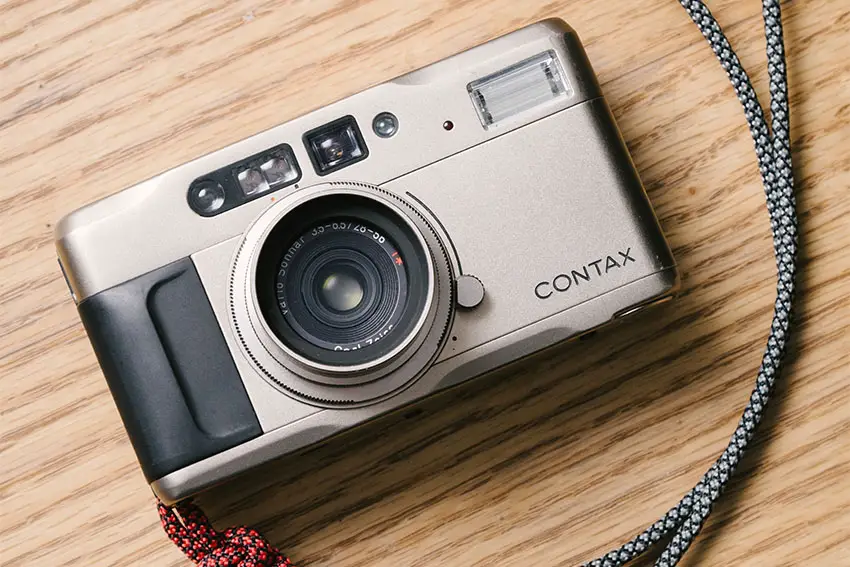
Features:
- Film: 35mm, DX ISO 25-5000, Non-DX Default ISO 100
- Lens: Carl Zeiss T* Vario Sonnar 28-56mm f/3.5-6.5
- Aperture Range: f/3.5 – f/16
- Shutter Speed: 16s – 1/700s
- Exposure Compensation: +/- 5 EV in 1/3 EV Steps
- Size: 123x67x41.5mm
- Weight: 375g
Kyocera didn’t want to take too many risks with the Contax TVS, they kept everything that was good about the Contax T2 and just gradually improved certain aspects.
That means, from the get-go, they kept the titanium design and finish, which was very successful for the T2, and with that, both cameras look very similar. The ergonomics are equally good.
On the other hand, they improved the maximum shutter speed to 1/700s and expanded the exposure compensation to +/-5EV.
Instead of a fixed 38mm lens, there is a 28-56mm zoom lens with darker apertures on the longer end.
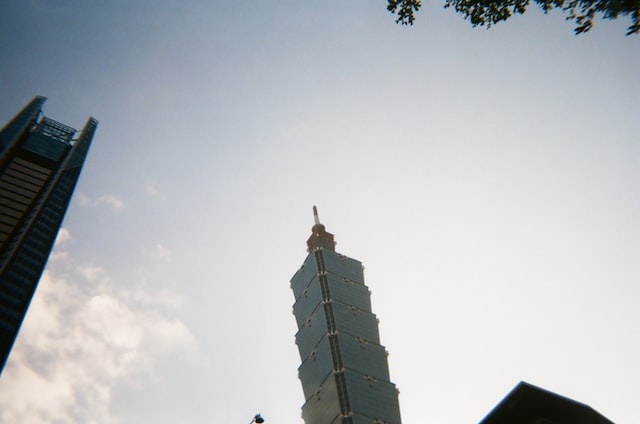
Lens Quality
As with every Contax out there, the lens is designed by Carl Zeiss. Specifically, it is a Vario-Sonnar range. The Sonnar line of lenses is the midrange lens line from Carl Zeiss, meaning that they have excellent optical quality but aren’t as bright as the Planar lenses.
The Carl Zeiss T* 28-56mm f/3.5-6.5 Vario-Sonnar lens is exceptionally well made and produces an exceptionally sharp image. Even though the apertures aren’t that bright (especially for today’s standards), the lens keeps the sharpness throughout the zoom range.
There is slight sharpness falloff and vignette towards the corners, but one should expect that from a lens this small and three decades old.
On the other hand, chromatic aberration is well controlled. You might catch a purple/green fringe here and there, but it requires a high-contrast scenario. The chromatic aberration isn’t distracting. Therefore, it shouldn’t be a problem for you.
Thanks to the T* coatings, the lens controls flare pretty well, especially when you consider that it is a tiny zoom lens made in the 1990s. The same coatings are the culprits for the excellent color rendition as well. After all, we are talking about Carl Zeiss here.
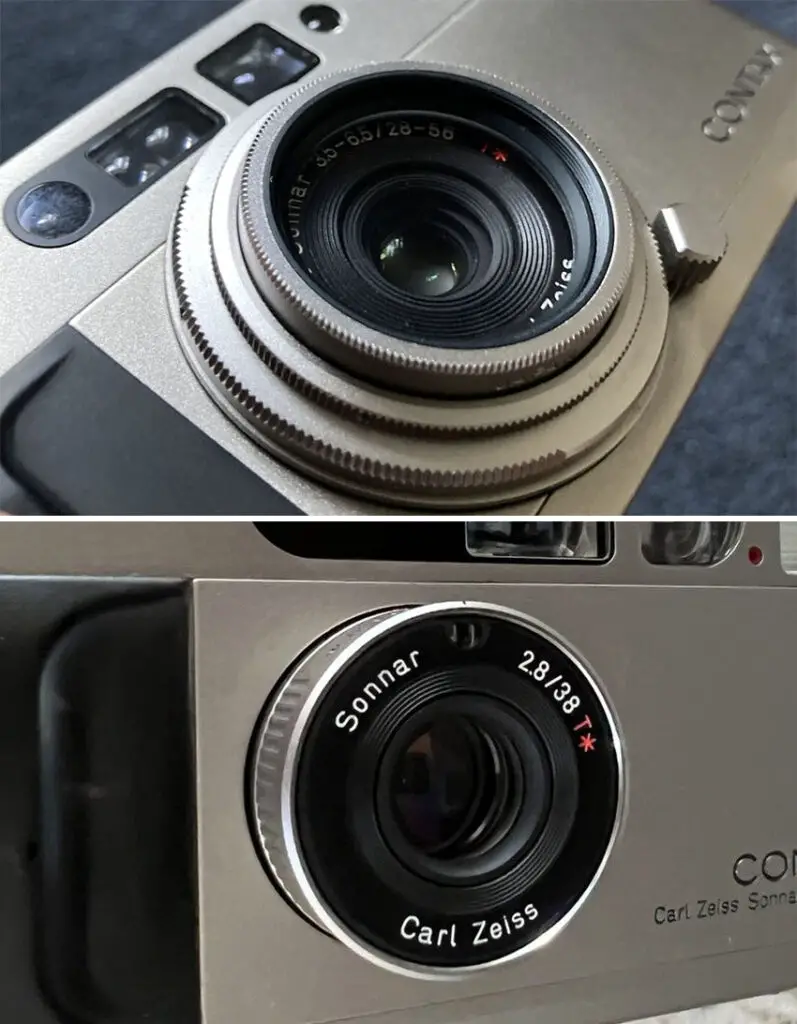
If we were to compare the lens to the prime 38mm on the Contax T2, at 38mm, the lens on the TVS would drop to f/4.5, which makes it one ⅓ of a stop darker. That means you are sacrificing the maximum aperture in order to gain the zoom range.
Zooming in and out is done via a lever on the lens, which doubles as the power-on button.
In summary, the TVS has a remarkable 28-56 f/3.5-6.5 Vario Sonnar zoom lens that is sharp and well-corrected, but it is significantly darker than the 38mm prime in the Contax T2.
Autofocus
The autofocus system in the TVS is passive, with the aid of an IR lamp for low light. It might prove to be a bit slow for some users as a first-generation passive device, but it will be accurate. You can’t expect the autofocus speeds of today’s cameras from a camera that is from the 1990s.

Since the zoom lens has narrower apertures, starting from f/3.5 and ending at f/6.5, the autofocus has a bit more leeway. So even if it is slightly off, it won’t be that visible due to the larger field of focus provided by the narrower apertures.
The autofocus allows for autofocus lock so that you can focus and recompose.
All in all, the autofocus will serve you well. It is reasonably fast for the time, accurate, and the narrower apertures of the lens work to your advantage in this case.
Shooting Modes and Usability
Even though the Contax TVS is a point-and-shoot camera, it has plenty of technology inside. The camera is capable of complete automatic function, with autofocus and exposure metering. The camera will pick the aperture and shutter speed for you. In other words, everything you need to do is point and shoot.
If you want some control over what the camera does, then you can use Aperture Priority by twisting the aperture ring to any aperture that you can select. In that case, the camera will only control the shutter speed automatically since you already preset the aperture.
You can further control the shutter speed by using Exposure Compensation. Here you can adjust the exposure compensation by +/- 5EV, allowing you to take some creative photos.
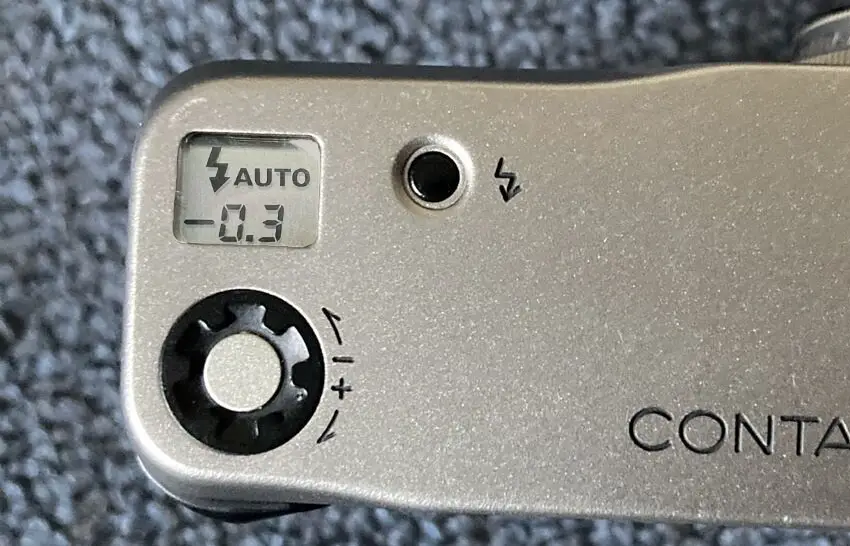
Compared to the T2, the TVS has improved the minimum and maximum shutter speeds. In this case, the camera can do as fast as 1/700s shutter speed unless it is at f/3.5. At that aperture, the shutter speed drops to 1/500s, which matches the T2. The longest shutter speed you can do on the TVS is 16 seconds.
There is a built-in flash, which is off by default. You can turn it on and choose from several different modes. You can control how the flash operates, but you can’t control the power of the flash. That part is controlled entirely by the camera.
You can set the flash to Auto or Red Eye reduction, Fill-in flash, or OFF. If you are using flash, you’ll probably use Fill-in flash the most. That way, the camera tries to expose for as much ambient light as possible and fill the rest in with flash.
To sum everything up, the Contax TVS is capable of fully automatic operation or in aperture priority. You can further control the camera via Exposure Compensation, where you have +/- 5EV of control. The flash is off by default, and the camera controls the flash power entirely if you turn it on in any mode.
Viewfinder
The viewfinder is nice and large, so using it will be a breeze. Contax cameras generally have excellent viewfinders, often outperforming much more expensive cameras in that regard.
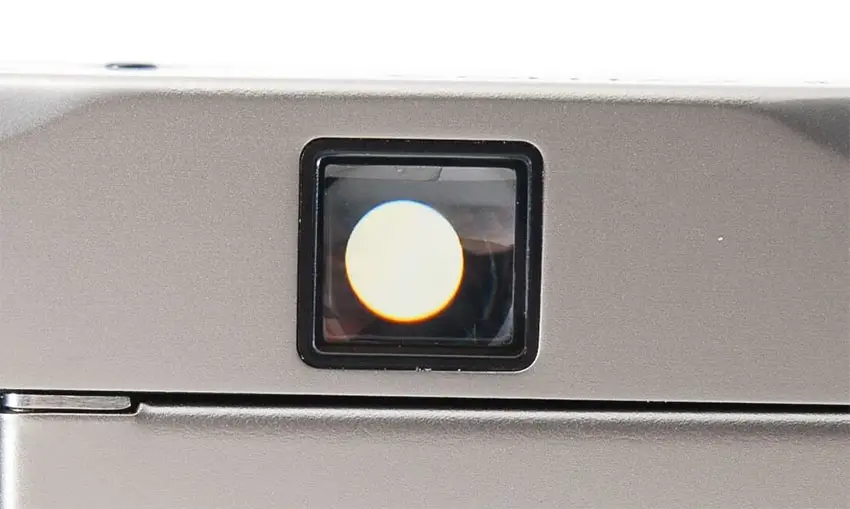
In Contax fashion, Kyocera included plenty of information in the viewfinder. There you can see whether you have the flash turned on, whether you have exposure compensation turned on, and whether you are in focus, and it will show the current shutter speed it has selected. That is plenty of information in the viewfinder for a camera that is from the 1990s.
In short, the viewfinder is nice and bright and displays a plethora of information inside.
Film and Battery
Just like other Contax cameras, you’ll need a 3V CR123A battery to operate the Contax TVS. You might not be able to find it in every department store, but they are still readily available in electronics stores, or you can order one via Amazon.
The battery life is not as great as it was on the Contax T2. Contax rates the TVS for about 15 rolls of 24-exposure film with the flash on half of the time on a single battery. If you don’t use flash, you’ll shoot more film rolls.
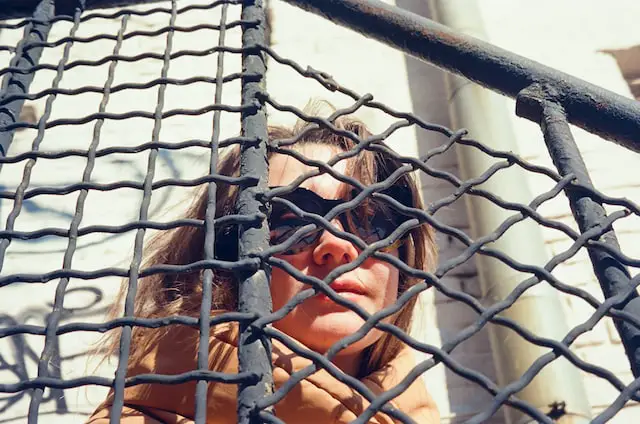
You can use DX film from ISO25-5000, which the camera will read automatically. If you use DX film outside that range or non-DX film, the camera will default to ISO100. The film loads automatically, and it advances to frame 1, and it is advanced automatically with each shot, and you can rewind it at any time. In other words, you get all the automatic film gizmos.
In summary, you can use ISO25-5000 DX film, and the camera will read it. Film outside that range or non-DX film will default the camera to ISO100. You can shoot around 15 rolls of 24-exposure film with flash on a single battery.
Style and Design
Kyocera continued the design language they started with the Contax T2. Thus the Contax TVS doesn’t really differ much aesthetically from the T2, and it is still the tried and true titanium design with well-thought-out lines and looks. It still has the same champagne and black color variations.

It is great that Kyocera didn’t fall for the trend of titanium boxes with no lines and just a lens sticking out.
It is equally rugged and tough as its predecessors, but it is a bit heavier this time, probably due to the more complex lens. You can still fit it in the pocket of your cargo pants.
Kyocera made sure that the camera fits well in hand, just like the T2 did, and pretty much every button is as ergonomically placed as possible.
In short, it is a tough and good-looking titanium-made camera that can double as a fashion accessory. The form doesn’t sacrifice function.
Price
Even though these cameras are hyped up to the moon by celebrities and fashion designers/models, the TVS doesn’t suffer that much from the hype. It also saw a price increase but didn’t go as astronomically high as the T2 and T3 did.
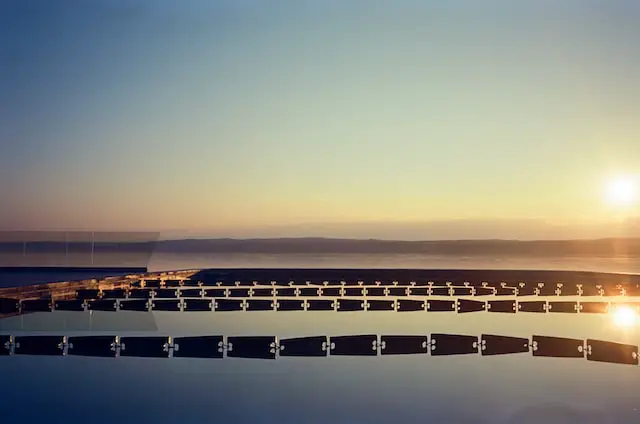
You can get your hands on a tested unit in mint condition for around $500. It is not cheap, but it isn’t that expensive either, given the fact that for the same amount of money, you can get a Yashica T4 Super, which is inferior in every aspect.
In the case of the T2, we recommended waiting a couple of months, if you can, for the prices to return back to normal, but in this case, the difference won’t be that big after a couple of months. So if you really like the camera, you should get one.
In summary, a tested mint condition Contax TVS won’t cost you more than $500, which is a great price for the camera.
Who is the Contax TVS for?
If you need a high-end point-and-shoot camera, and you don’t need a 38mm f/2.8 that badly, then the Contax TVS is a great option. You have the flexibility of a zoom lens, which costs a fraction of what a T2 or T3 will set you back. It is a great camera to dip your fingers into film photography, and if you manage to get a good copy, it will serve you well for years to come.
Read More:

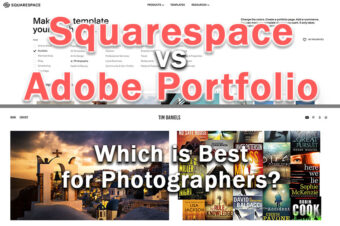

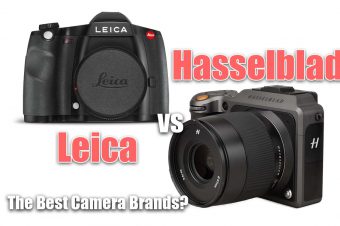

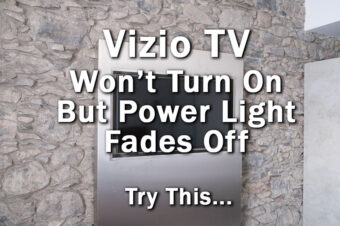
Leave a Reply